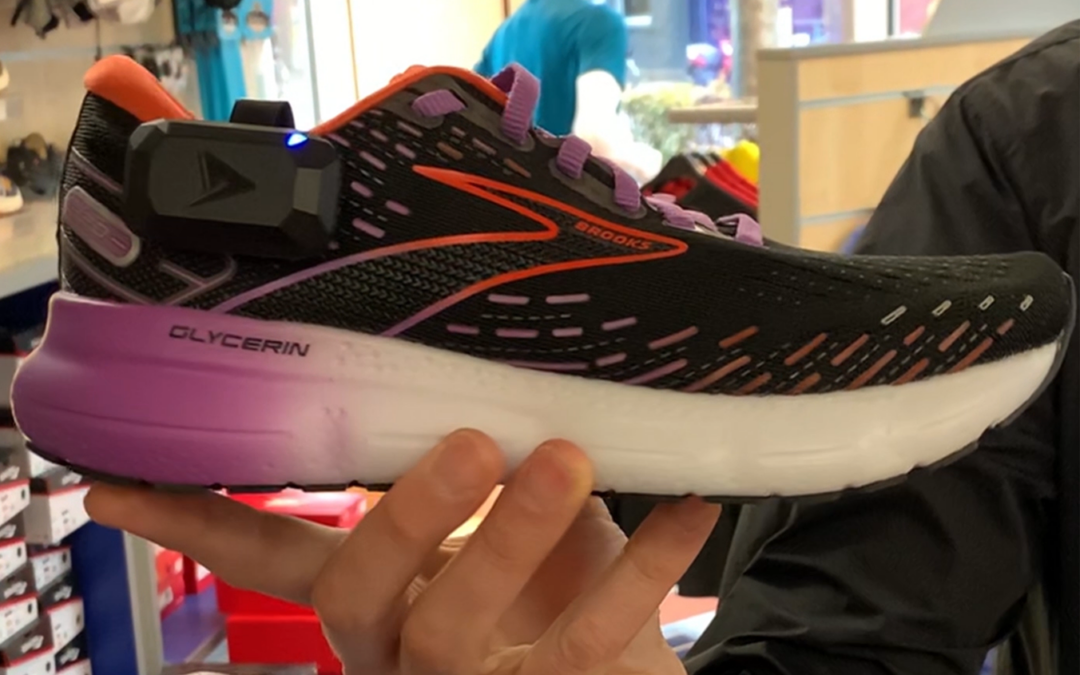At ARION we are on a mission to decode human movement. After a decade of research, six years of operation, and thousands of hours of recorded movement data, one thing has become very clear to us. Movement is exceptionally unique.
We all have diverse bodies, varied techniques, unique philosophies and personal goals. All of these elements heavily influence the way we move. Each contributing to our individual biomechanical profile, is what we call, your unique running identity.
To explore this, in this content series we will highlight that there is no such thing as the perfect running shoes. It all depends on your own completely unique biomechanics and your individual goals. We will be testing eight of the latest and greatest running shoes. Utilising our groundbreaking technology shows how one shoe can have two very drastic results on two very seemingly similar people.
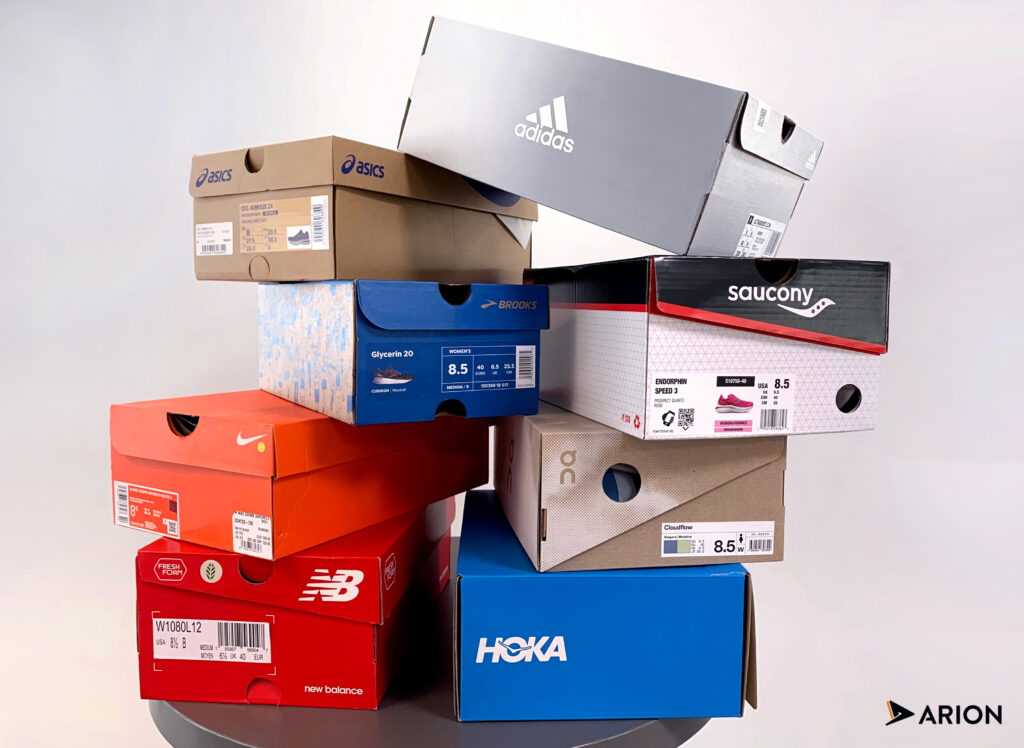
We don’t review the shoes based on their general performance. We simply highlight the diverse results generated across different people. Each month we will put a new pair of shoes to the test before finally reviewing it all together with a final summary of our movement experiment.
As always, it’s the same conditions (treadmill), same shoe, same size, same pace, same distance, very different results! This week it’s the Brooks Glycerin 20…
Brooks Glycerin 20
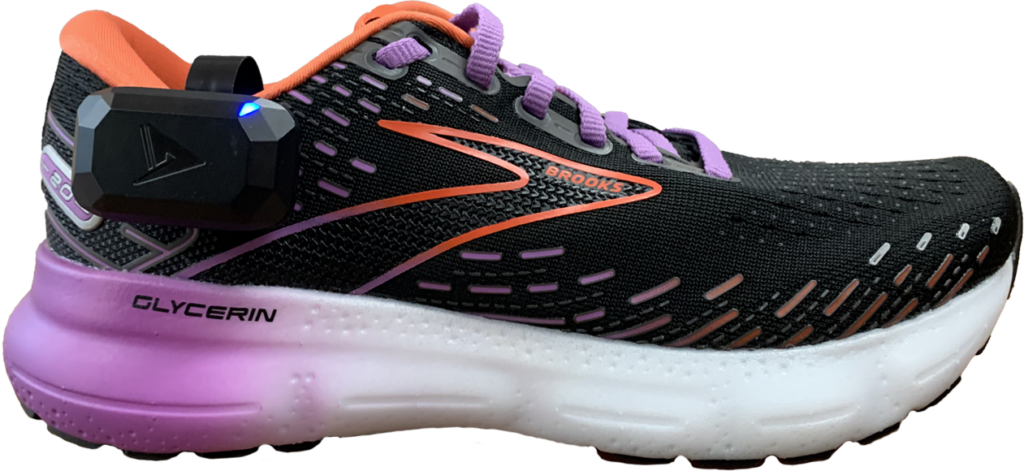
The Brooks Glycerin 20 is a neutral running shoe with a heel-to-toe drop of 10mm. The running shoe is known for its supreme softness and max comfort due to the DNA LOFT v3 technology. The Glycerin 20 has an improved and secure fit because the lightweight upper is comfortably holding the foot in place. With a redesigned midsole and outsole, the Glycerin 20 provides smooth and easy transitions to offer a widened platform.
1. The Runners
Let’s introduce our runners. Runner 1 is Manouk. She runs around once every two weeks for a longer run, and every week a couple of short runs to conduct research for ARION. Her preferred distance is around 5k with a pace between 5:15 and 5:30 min/km. A future goal for Manouk is to finish a quarter triathlon. She likes to run because she wants to stay in shape and doesn’t have time to take part in other sports.
Our second runner, runner 2 is Elzemieke. She runs around three times a week for long runs. Her preferred distance is around 5k with a pace between 6:30 and 6:50 min/km. A short-term goal for Elzemieke is to run a 5k race during the Eindhoven Marathon. Elzemieke likes to run because it clears her mind and to stay in shape.
For both runners, we will compare the Brooks Glycerin 20 to a baseline shoe. This baseline shoe will be an average of how both runners run. For both runners, the baseline shoe is a neutral running shoe with a lower heel-toe drop and stack height (low mid-sole thickness). With this baseline shoe, Manouk is a forefoot lander and Elzemieke is a rearfoot lander. Manouk is neutrally balanced whereas Elzemieke uses her left foot a little more than her right. Both runners have an average cadence for a recreational runner and a relatively high stability profile with little variation in the foot placement with each step.
2. The results
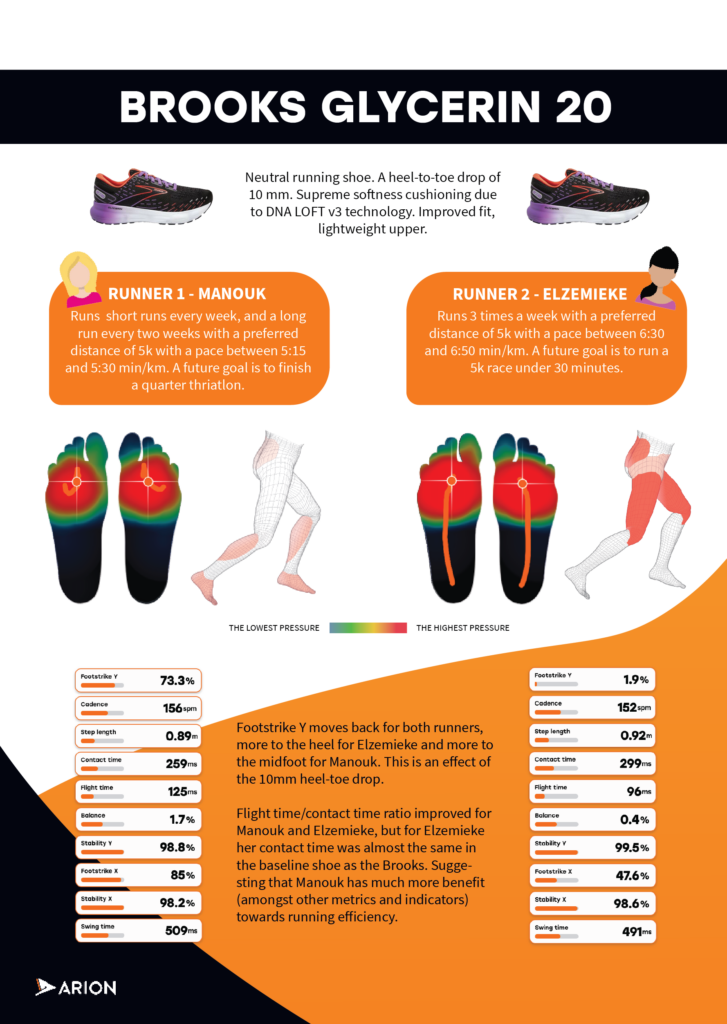
3. The Insights
In a previous article about the HOKA MACH 5, we saw that Manouk and Elzemieke have a very different running technique, even if they use exactly the same shoe. Let’s find out how the Brooks Glycerin 20 affects their technique, and how we can determine if it’s a good fit.
Footstrike 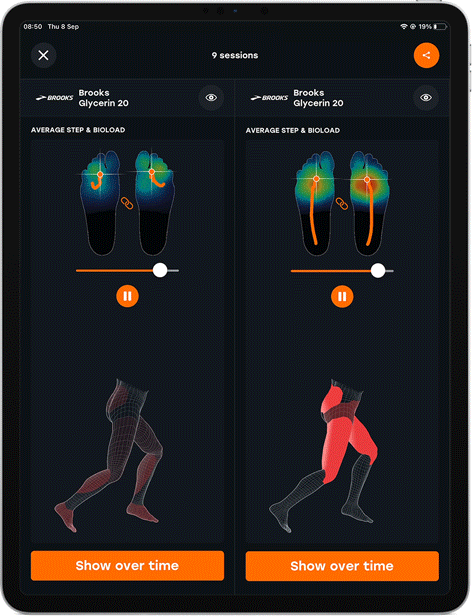
When we take a look at footstrike it’s good to remember that a footstrike of 0% would indicate a foot landing that is as far as possible towards the heel, and a footstrike of 100% indicates the foot lands right at the tip of the toes. In our baseline shoe, we’ve already seen that Elzemieke is a rearfoot lander, landing her foot a little bit away from the back of the heel with a footstrike of 16%. On the other hand, in the exact same shoe, Manouk is very clearly a forefoot lander with a footstrike of 78% when wearing the baseline shoe.
At 10mm, the Brooks shoe has a relatively high heel-toe drop which often encourages runners to land more towards their heels. With both Elzemieke and Manouk we can see this effect quite clearly, both have a footstrike that is further back. For Elzemieke, as a light heel lander at 16% in the baseline shoe, we see her footstrike become a much more extreme heel landing at 1.9%, very close to the back of her heel. With Manouk, she began as quite an extreme forefoot lander at 78% in the baseline shoe, which becomes somewhat less extreme at 73% in the Brooks shoe.
We can also consider how the foot is placed on the ground in another direction, from the outside to the inside of the foot. For this, we refer to Footstrike X, where 0% indicates the foot lands entirely on the inside of the foot and 100% entirely on the outside of the foot. Elzemieke who landed more on the outside of her foot in the baseline shoe, now lands more centrally, using the Brooks shoes. Manouk’s landing was much further towards the outside of the foot in the baseline shoe with a Footstrike X of 80% compared with Elzemieke’s 62%, but see much less influence on Manouks footstrike X from the Brooks. Although the effect is smaller, it is also interesting to see that Manouk’s foot lands more towards the outside of the foot in the Brooks, whereas for Elzemieke the effect was in the opposite direction, landing more central, and less on the outside of the foot. The same shoe has entirely opposite effects on different runners of similar age and running experience.
Bioload
Many shoe experts will recommend increasing heel-toe drop to help reduce loading on the Achilles tendon, ankle and foot, a philosophy that has also been supported by some published research studies. Nicely aligned with this, for Manouk we can see that when wearing the Brooks, she experiences a slight shift in the bioload profile that indicates a little less loading in the lower leg, ankle and foot, with loading slightly more evenly spread across more of the rest of her body. With Elzemieke we see a very different effect, whilst in the baseline shoe, we can already see much more loading in the knees, upper leg and lower back, with the Brooks this loading increased further with even more activity in the knees, upper leg, and lower back. Elzemieke’s bioload has increased, whereas Manouk’s has become slightly more evenly spread when using the Brooks.
Contact time & flight time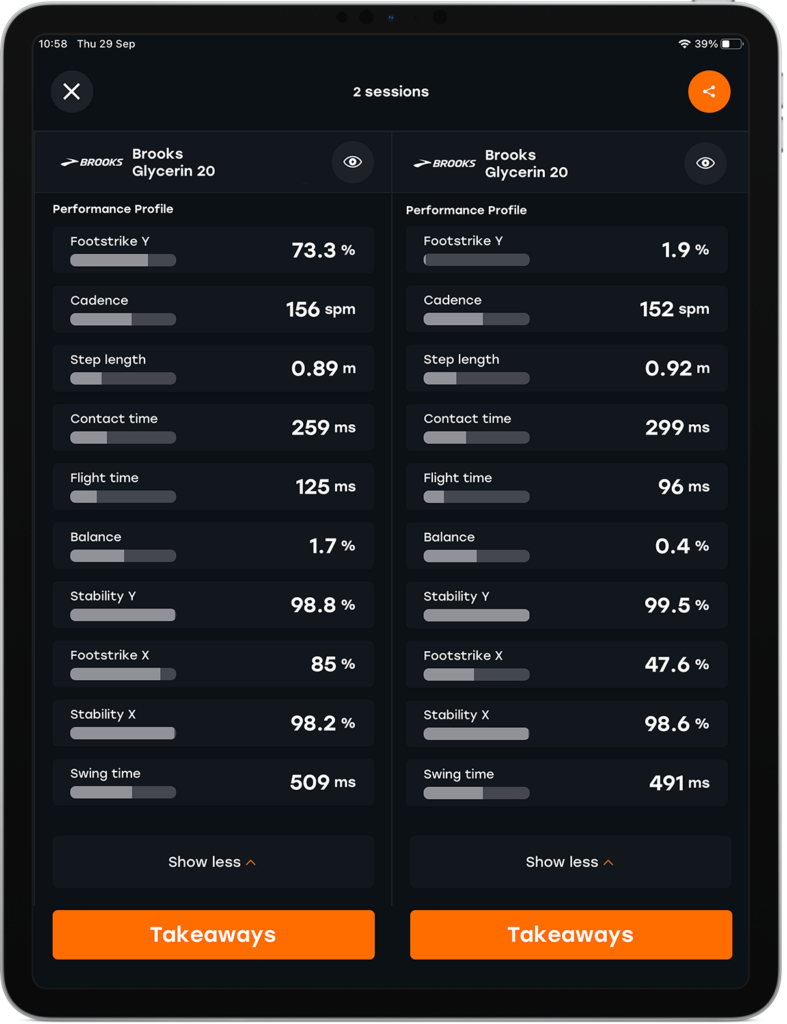
For Elzemieke we see that, despite landing much more towards her heel with the Brooks, her contact times are almost identical to the baseline shoe. She does enjoy a slight benefit in her flight time improving her flight time to contact time ratio, but to a lesser extent than Manouk. Alongside the more evenly spread bioload profile, Manouk also enjoyed shorter contact times and a longer flight time, significantly increasing her contact time to flight time ratio. In combination with other metrics and indicators, the data suggests Manouk is running more reactively and potentially more efficiently in the Brooks shoe, Elzemieke appears to also gain some benefit with her running style, but to a lesser extent.
Movement is unique.
If we step back from all the data insights, on a high level it seems both Manouk and Elzemieke saw benefits from the Brooks shoe compared to the baseline shoe, but in very different ways. Manouk particularly seems to show more evenly spread loading, lower injury risk indicators and higher efficiency indicators when wearing the Brooks indicating she could get even more benefit from this shoe than Elzemieke.
The unique combination of your personal running characteristics and the available shoe technologies is the reason why at ARION, we focus on your unique running identity, combining your individual biomechanics with specific shoe technologies that bring you the biggest possible benefits. Stay tuned as we continue to test another pair of the latest and greatest running shoes every two weeks and start to explore some comparisons between the different shoes that we test.
If you want to discover your running identity visit your nearest HUB in one of our ARIONHUB stores to learn more.
www.arion.run

